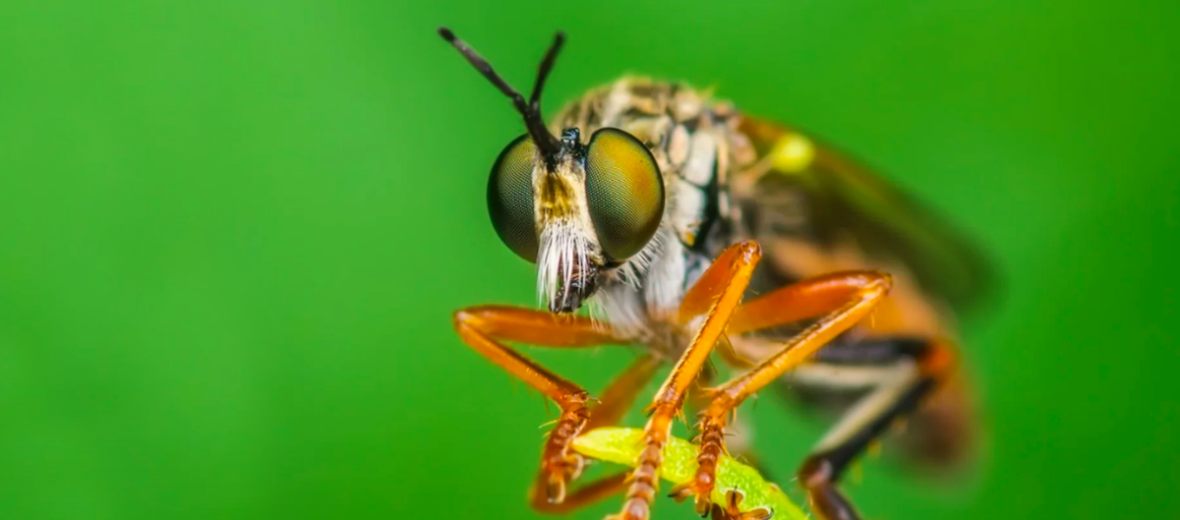
Feared by insects the world over, it’s the robber fly. These little winged assassins can be found just about everywhere, but are particularly fond of arid and sunny climates. Their name is derived from their habit of attacking, primarily, other insects. But they sometimes attack humans and pets. Due to their abundant numbers and worldwide distribution, sans Antarctica, these insects are not evaluated by the IUCN.
First the Stats…
Scientific name: Asilidae
Length: Up to 2+ inches
Lifespan: Up to 3 years, for the entire life cycle
Now on to the Facts!
1.) Based on the species, these insect assassins prey almost exclusively on a wide variety of other insects, like beetles, butterflies, moths, flies, various bees, ants, dragonflies, damselflies, ichneumon wasps, and grasshoppers. Some spiders are also taken as well.
2.) These winged assailants attack insects on the wing (in mid flight).
3.) There are around 7,000 described species of robber fly.
4.) They have a short and thick proboscis that encloses a sharp, sucking hypopharynx (piercing mouth part).
5.) Not only can they deliver a swift death to their prey, but they can also deliver a very painful bite to pets and humans, if handled.
But wait, there’s more on the robber fly!
6.) These flies attack their prey by stabbing them with their short, yet powerful proboscis. They then inject the victim with saliva that contains neurotoxic and proteolytic enzymes which very quickly paralyze the victim and soon begin to digest their insides. Then the fly sucks the liquefied organs through their proboscis. Yummy.
7.) Some robber flies mimic the appearance of other insects, in order to get close enough to attack.
Did you know…?
If a robber fly lands on you, don’t slap it, just lightly brush it away. If they bite you, it will hurt! Their bite contains digestive enzymes and a strong venom. But they aren’t known to carry or transmit diseases. You will likely just have a red mark and intense pain at the site of the bite.
8.) Females deposit whitish-colored eggs on various substances, like grass, plants, and in soil or rock crevices.
9.) Eggs are covered with a protective, chalky coating.
10.) Larvae feed on different things, based on the species. Some feed on detritus while others are predatory from birth.
But wait, there’s still more on the robber fly!
11.) Their complete development varies per species, but can take up to 3 years.
12.) Their usual habitats include: forest steppes, open steppes, savannahs, semideserts, maquis shrublands, and other shrubland types like chaparrals and fynbos.
13.) Bats, birds, lizards, frogs, toads, and large spiders all prey on robber flies.
14.) Unlike other fly species, robber flies only have 1 pair of wings.
Now a Short Robber Fly Video!
Be sure to share & comment below! Also, check out the Critter Science YouTube channel. Videos added regularly!
Want to suggest a critter for me to write about? Let me know here.



